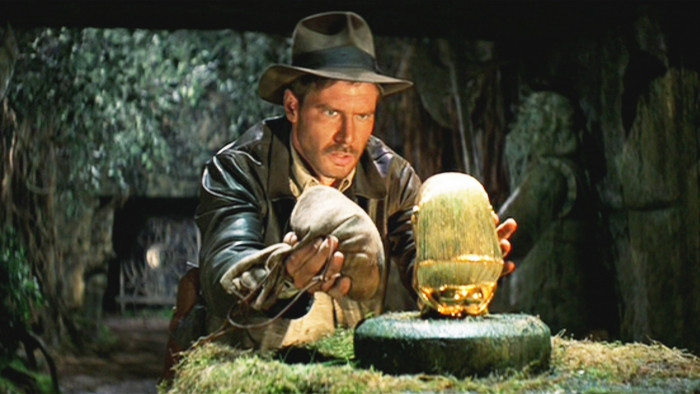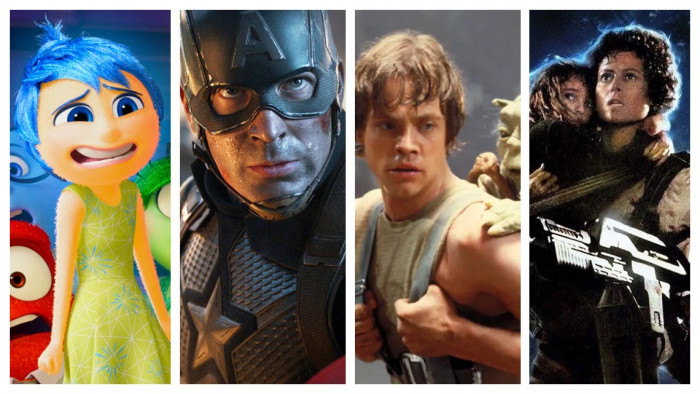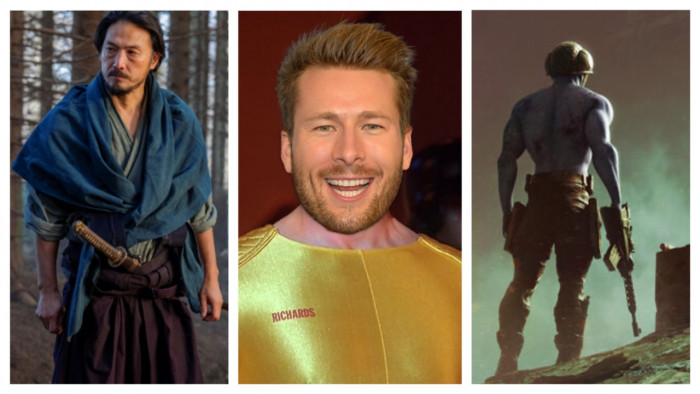The sudden clank of heavy machinery disturbs the still air. Seemingly out of nowhere a huge earth mover rolls into view. Its vast shovel is brought up high before it crashes down through one of the buildings of this run-down Japanese village – the site where James Bond first comes face-to-face with his Skyfall adversary Raoul Silva. Debris flies everywhere. The few people witnessing this are unable to tear their eyes away. Behind this mechanical monster stands the base of a toppled statue. It’s next.
It seems safe to assume that this village has seen better days. Safe, but ultimately wrong. Why? Because it was built from scratch using wood and polystyrene and, now it’s served its purpose, it’s being torn down to make way for whatever film is next on the schedule at Pinewood. Whatever it is, it’ll have a tough act following Skyfall in terms of hype, secrecy and drama. And, as you’ll see, we don’t just mean on-screen drama.
Making history
It’s no secret that Skyfall – the 23rd Bond film – is late. Put on hold for almost a year because of what producer Barbara Broccoli describes as MGM’s “financial difficulties” (she’s being diplomatic, and Daniel Craig snorts with friendly derision when she says it – they went bust) the future of the entire franchise was uncertain, with potential buyers refusing to meet the $2bn (£1.4bn) asking price. Especially because that figure failed to take into account the debt they’d be taking on. Eventually, after much legal wrangling, a deal was struck with Sony and production on the film began again. Although, Craig is happy to admit, for him, it never really stopped.
“We were lucky to get a break from making these movies,” he tells ShortList on-set at Pinewood. “Yes, it was enforced because people had to sort their money out and do all those sort of things, but what it did was it gave us a chance to develop the script and the story. And we filled the time as best we could. There’s an emotional journey in it, but it’s a James Bond movie at the end of the day and I want it to be an entertaining ride.”
Skyfall is an important Bond film. Rightly or wrongly, there was an air of mild disappointment following the release of Quantum Of Solace, so there’s obviously the desire to return to the highs of Craig’s first film in the tux: Casino Royale. But it’s more than that. Last week (5 October) marked 50 years since the first film Dr No was released in cinemas – Bond is “a great big hairy marshmallow” declared Time magazine in its negative review on release – and this year has already seen various anniversary celebrations in the form of books, exhibitions and a, um, Heineken advert.
Roger Moore’s glossy reminiscence Bond On Bond may have a nice line in bawdy captions (a photo of a particularly buxom-looking Honor Blackman is accompanied by the line “She gave a well-rounded performance”, nudge, nudge, wink wink etcetera), but Skyfall is far and away the headline act. And Broccoli is confident:“We have an extraordinary cast, it’s directed by Sam Mendes, with a script by [Neal] Purvis, [Robert] Wade and John Logan. That sounds pretty special to me. We’re making the best Bond ever.”
The impression on set is that the scale of the film is huge; the first Bond film to make use of Pinewood’s newly rebuilt 007 Stage (the previous one burned down in 2006). The day we’re on set it’s filled with a re-creation of Temple station, the site of a huge explosion, train derailment and chase as Bond tracks Silva through the tunnels. Tunnels we’re lucky enough to explore ourselves.
Lucky because standing on the platform before stepping on to the tracks, it really feels like we’re actually in the station, such is the attention to detail. And it goes a small way to satisfying that urge you feel (OK… we feel) to explore those tunnels for real.
The next day the stage is closed to visitors, and indeed even the cast and crew. The filming of the derailment is so dangerous it’s filmed remotely with Mendes and his team watching from a safe distance on monitors.
Directing Bond
Mendes himself is an interesting choice as director. Specifically, it’s his action credentials that have been called into question by some grumblers. But when we catch up with him on location in Istanbul three weeks later, his enthusiasm for Bond is immediately apparent.
“I love being part of this tradition,” he says. “I want to embrace that. There are all sorts of mischievous things we’ve done in the movie that I hope the fans will recognise.”
The obvious question at this point is, “What specifically?” Getting an answer is another matter entirely. Security is as tight as if the real MI6 were calling the shots. Craig denies all knowledge of the train explosion on the Underground, part of which we’d seen being filmed the day before, until Broccoli leans in to tell him: “It’s OK. They were there.”
Javier Bardem even goes as far as responding to a question about whether an evil character is more fun to play than the hero by saying, “Who said he was evil?” He’s playing the villain.
Mendes, however, is happy to talk about the direction he’s taking 007 in: “You can’t remake Fleming’s books – some of them have already been made pretty well. I’m hardly going to touch Dr No or Goldfinger. But as the films became more interested in the women, the action and the glamour of the world Bond inhabits, they left behind some of Fleming’s darkness. The later novels – You Only Live Twice and The Man With The Golden Gun – dealt with Bond ageing and becoming aware of his own fallibility. We were heavily influenced by that.”
Craig’s Bond films are darker than what’s gone before. For Skyfall, Mendes has developed his own take on this more rugged 21st-century character: “We are living in a Dark Knight world, where darkness doesn’t equal commercial disaster. The Bond franchise used to need an effervescence and a sense that he was indestructible. That’s what led to the Roger Moore, Tim Dalton and Pierce Brosnan eras becoming more and more – I felt – not of the real world. On the other hand, Bond can never be Bourne. He doesn’t walk among us – Bond walking through Waterloo station just isn’t as exciting as Bourne walking though it. You’re hovering a foot above the real world at all times, while still trying to keep him real enough that we care about him as a character. That’s the balance.”
On set in Turkey
We leave our Skyfall experience where you’ll begin it – in a Turkish square by the Ortakoy Mosque on the banks of the Bosphorus. This is the setting for the opening sequence. The first day it’s without actors – the second unit team is filming a car as it crashes and slides on its side through the makeshift marketplace.
Oranges fly everywhere. One rolls off set and close to where we’re standing. We pick it up. We’re instantly told to put it back down.
But it’s our final day in Istanbul (Fleming’s favourite city, by the way – perhaps one of the “mischievous things” Mendes hinted at) that’s most thrilling. Bond emerges from a truck, a villain exits the crashed car, they briefly exchange fire until conveniently-placed motorbikes are “borrowed” for the chase to continue elsewhere. Mendes yells, “Cut,” we nod happily and are escorted off set. The whole sequence lasts 10 seconds.
And that’s it. That’s the reason we flew 1,560 miles and spent three days in Turkey. And it was completely worth it. After days watching footage on monitors and seeing stunts being filmed without real actors, this was Daniel Craig, our generation’s Bond, in the flesh doing what he does best. And more than that, it was a tantalising glimpse into what to expect come 26 October. James Bond will return in Skyfall. You’ll be glad he did.
Skyfall is at cinemas nationwide from 26 October
Latest
Related Reviews and Shortlists


The 10 best war movies of the 21st century









